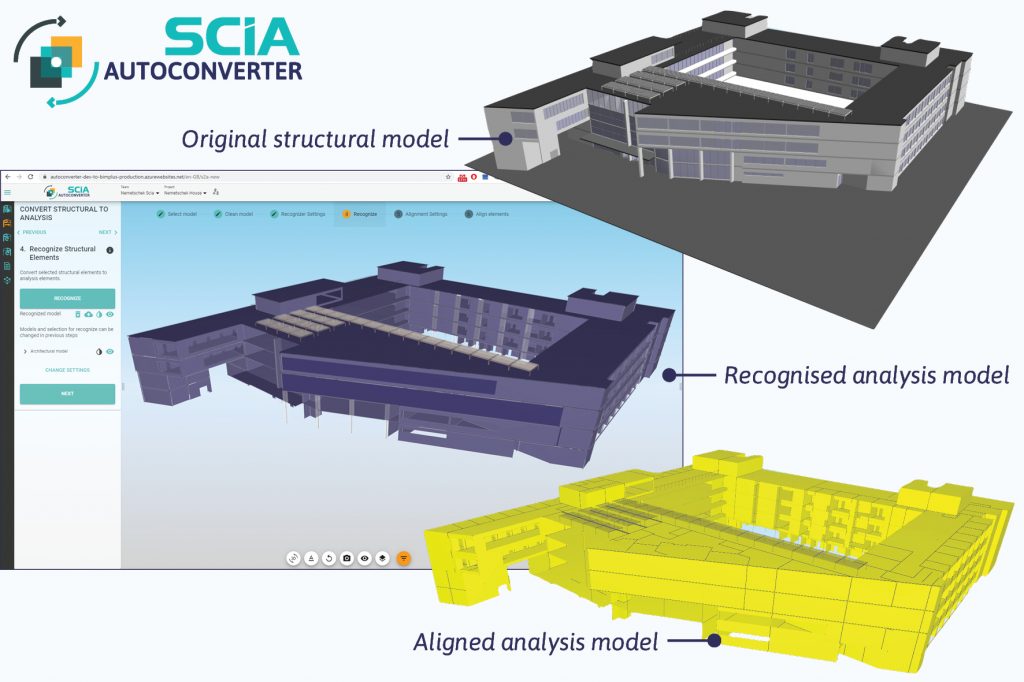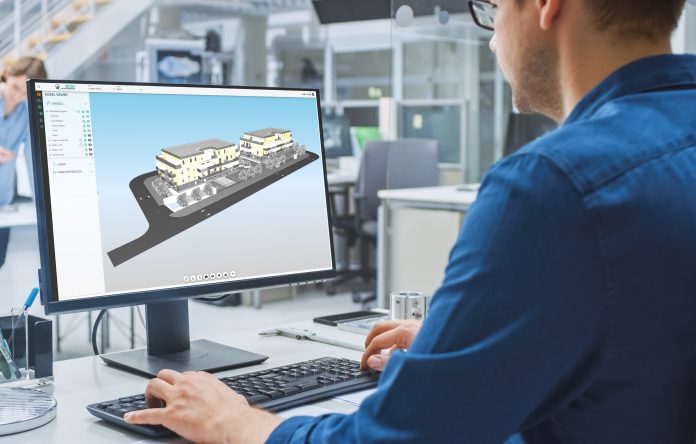Everyone in the AEC industry is familiar with the acronym BIM nowadays. Whether you work in a BIM process workflow or not, there’s no way to ignore it. A temporary trend or a logical next step in an ever-changing digital world? Let’s dig a little deeper and find out
While a misconception exists that BIM is “just” about 3D modelling, it is important to note that BIM is a way of working. ISO 19650:2019 defines BIM as follows: “The use of a shared digital representation of a built asset to facilitate design, construction and operation processes to form a reliable basis for decisions.”
Whoever has worked on a building project knows for sure: the bigger the project, the more collaboration and the more communication is required. And collaboration and communication are the cornerstones of BIM.
Bringing information together
By bringing together in one place all information about every part of a building, BIM allows anyone to access that information at any given moment. This leads to an output known as a Building Information Model. Updates of such a model can happen continuously and in a way that everyone in the project stays updated. Because the project is already built virtually, the physical construction of the building is better prepared and possible challenges can be overcome in an earlier stage, leading to higher efficiency and less risks on site.
As already briefly mentioned, working with a BIM process workflow implies many practical advantages for everyone involved. The collaboration and communication between stakeholders, from architects and modellers to structural engineers and draughtsmen, improves significantly. Everyone works on an up-to-date model, which naturally leads to fewer errors, less rework and increased efficiency. Because of the accuracy of the detailed model, better estimations can be made, leading to better cost optimisation and to less waste from a material perspective too. The project as a whole benefits from BIM since an improvement in build quality can be noticed.
Despite its change-averse nature, the industry has definitely changed. A study conducted by NBS revealed that the growth in the awareness and use of BIM is indisputable: in 10 years’ time, the adoption rate increased by almost 60%.
There is, however, the other side of the coin: only 40% say that BIM is the norm for project information. Even though the benefits are clear, some key arguments pop up regularly as barriers to adoption. Clients play a key role in encouraging the use of BIM in projects. Moreover, many professionals state that BIM is not appropriate for small projects. For BIM to be truly universal and to be business as usual across the industry, these issues need to be addressed.
Collaboration at the heart of a safe, sustainable built environment
At SCIA, we really believe in the success of the collaboration between all disciplines. It is at the heart of delivering a safe, sustainable built environment, which in turn leaves a positive lasting legacy. That’s why we are constantly looking for ways to improve the engineering workflow and to make BIM a workable reality for all by addressing the challenges different stakeholders face. From our angle, the goal is to reduce the time it takes to create analysis models, to ensure structural models and analysis models show the same reality at every step in the project and to make the management of changes between disciplines seamless.
SCIA AutoConverter is a true game-changer, bridging the gap between engineers and modellers and going for collaboration at its best. Effectively, it allows engineers to join the BIM process for the first time. SCIA AutoConverter automates conversion of a 3D structural model from any CAD software into an accurate analysis model. What’s more, it gives the engineer full control over the process. The solution maximises data reuse and minimises manual handling across the entire process – eliminating the need for time-consuming, bothersome remodelling tasks, 150 times faster than standard processes.
What the future of construction will look like is hard to predict – we’re software builders, not fortune tellers! One thing we’re certain of: BIM is here to stay. Different factors – legal, environmental and economic – will make sure in due time the whole industry will work in the BIM workflow. For now, we at SCIA would like to contribute where we can. SCIA AutoConverter can already bring us one step closer to a BIM future for all.
Click here for more information or a free trial.
Katrien De Geest
Director Marketing
SCIA NV
Tel: (+44) 01530 448 000
LinkedIn: SCIA
Facebook: SCIA
Youtube: Nemetschek SCIA
Please note this is a commercial profile.










![[VIDEO] Making DorTrak reports easy to read with Fireco Inspecting fire doors at Fireco, firedoor technology, 2023](https://www.pbctoday.co.uk/news/wp-content/uploads/2024/04/JPZ_2364-web-218x150.jpg)
![[VIDEO] Re-flow Field Management review by Traffic Management Installations When TMI began subcontracting for councils and government bodies, they wanted to present their site reporting in a more professional manner](https://www.pbctoday.co.uk/news/wp-content/uploads/2025/03/TMI-Media-1-218x150.png)


